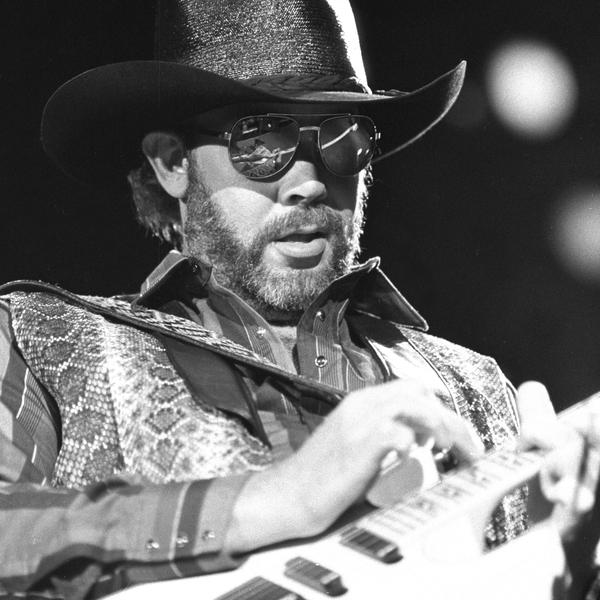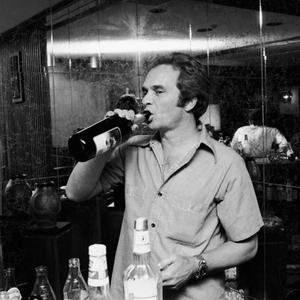




Link copied

Having set off on his own path in the late 70s with a unique blend of southern rock, blues and country, the torch Hank Williams Jr lit would be picked up by generations after him – setting the template for artists like Toby Keith, Jason Aldean and Florida Georgia Line, to name a few.
Holler takes a trip back through the years to pick out some of the highlights from a half-century at the top of country music in our best Hank Williams Jr songs list.
My Name is Bocephus
There’s nothing Hank Williams Jr. likes to sing about more than Hank Williams Jr., so naturally he has his own theme song.
It was his dad, Hank Williams Sr., who gave his son the nickname “Bocephus” - named after Grand Ole Opry comedian Rod Brasfield's ventriloquist dummy - and in this low-down-and-dirty slice of blues he’s on the lookout for love and looking back on all the lessons he learned from those that came before him.
Dinosaur
On this acutely self-aware cut off Habits Old And New from 1980, Hank bemoans the influx of “high heel sneakers”, “gay guitar pickers” and Donna Summer at his favourite bar.
Struggling under the flashing lights and blaring disco, he admits he doesn’t really belong there anymore. “I’m a dinosaur”, he sings. “I should’ve died out a long time ago”.
Things were changing and his peculiar brand of “outlaw” Southern country rock was beginning to sound more reactionary than revolutionary.
Eleven Roses
Hank picks 11 red roses from the garden to send to a lover to beg for forgiveness in a cheesy declaration of his love.
Why not 12 roses? Oh, that’s simple. All she has to do is hold the 11 roses up and look in a mirror and the 12th rose will be looking right back at her. Sadly he didn’t follow it up with ‘Is That A Ladder In Your Tights Or Is It A Stairway To Heaven’.
I'm For Love
It was the mid-80s and it seemed like everyone in America had a problem with someone or other. Mothers weren’t happy about drunk drivers, the Pope wasn’t happy about the pill, horses weren’t happy about automobiles. But not Hank.
“I'm for love and I'm for happiness and I'm for if you don't like it, cant you just let it pass?", he sings on this cheerily upbeat cut from Five-O.
Although he does admit to not being in favour of letting cats in the house. Or fishing in the rain. Or liberals.
Mind Your Own Business
Hank teamed up with Reba McEntire, Willie Nelson and Tom Petty in this storming cover of one his father’s most famous songs, admonishing the town gossips for snooping around and spreading rumours about him and his wife.
Hank Jr. and the gang managed to take it all the way to no.1 this time too.
Old Habits
Hank Jr. has kicked a lot of habits in his time. In this 80s softboi ballad, he reflects on how he’s given up smoking and drugs, but he just can’t seem to give up on the love of this one particular woman.
He managed to quit smoking by sucking on Life Saver sweets, but unsurprisingly this method doesn’t work when he tries it for his broken heart.
Living Proof
After a suicide attempt in 1974, Hank Jr. turned his life around, and the following year he came back with a new southern rock sound and the album Hank Williams Jr. and Friends.
Unfortunately, that same year he was severely injured in a mountain-climbing accident in Montana, and it would take two years and several major surgeries to get him back to full health and reconstruct his face.
‘Living Proof’ was his resolution to “quit singing all them sad songs” of his father’s and be an artist in his own right.
The Conversation
In one of the oddest premises for a song in his catalogue, Hank Jr. and Waylon Jennings got together to record what was basically just a fairly straightforward conversation about Hank Williams Sr. and what it was like growing up having him as a father.
Along the way they take a little dig at the country music establishment that turned its back on him while he was alive, only to laud him after his death.
Texas Women
Williams' first no.1 since 1971's ‘Eleven Roses’ came in 1982 with this single from his Rowdy album.
By this time he’d given up wooing his potential girlfriends with flowers and cheesy one-liners, settling instead for a good ol’ take-me-as-I-am dating philosophy.
Judging by the album cover, it was working too!
Born To Boogie
Sadly not the T-Rex song of the same name, but just as much of a family favourite dancefloor filler.
There’s be-bopping and jitterbug boogieing aplenty, as Hank goes about reclaiming his reign as elder statesman over the burgeoning neo-traditionalist movement of the late 80s in style.
Whiskey Bent and Hell Bound
The title track to Hank’s second album of 1979 is a waltzing honky tonker about what he gets up to whenever his “good woman” isn’t around.
Turns out he just chills out with a cold beer and listens to country music. That is until someone puts Hank Williams on. As soon as he hears ‘I’m So Lonesome I Could Cry’, he goes full on black suit Spiderman and starts drinking whiskey and hooking up with randoms in honky tonks.
Probably has a weird emo fringe too.
All My Rowdy Friends (Have Settled Down)
George Jones is finally getting straight, Waylon's staying home with Jessi Colter a lot more, Kris Kristofferson’s off making films in L.A., and even Johnny Cash isn’t up for having any fun anymore.
Hank Jr. has had just about e-bloody-nough of it too, like a sulky teenager who thinks everyone over the age of 40 who doesn’t want to get drunk in the park on a weeknight is boooring and texts them all to say he needs new friends!!
A Country Boy Can Survive
“I live back in the woods you see / My woman and the kids and the dogs and me”, Hank sings as way of explanation for his way of life in this probably wildly inaccurate – albeit thoroughly enjoyable - portrayal of what living in the country is like.
A list of things he and his family like to get up to out there includes ploughing fields, catching catfish, making their own whiskey and wine, growing tomatoes and generally not giving a damn.
It would all sound quite wholesome if it wasn’t for shotguns and the “beech-nut” spitting.
All My Rowdy Friends Are Coming Over Tonight
Probably one of the greatest country music videos of all time, and definitely the greatest imaginary party ever thrown!
George Jones turns up on a lawnmower, Waylon and Willie are there playing poker; Cheech and Chong, The Oak Ridge Boys, Mel Tillis, Porter Wagoner and Kris Kristofferson - they’re all there.
Little Jimmy Dickens arrives with a beer keg and Hank Williams Sr even turns up at the end in a ghostly Cadillac. So much for all his rowdy friends settling down.
Family Tradition
Hank Williams Jr. wrote his much loved anthem of rebellion in response to criticism of his change of musical identity and direction in the mid-70s, and in defence of his lifestyle and the lyrics of his songs.
He points out that his hard-living and alcohol and drug use were just a "family tradition" he picked up from his father - all he was doing was “just carrying on an old family tradition”.
---
Listen and subscribe to Holler's The Best Hank Williams Jr. Songs playlist below:





